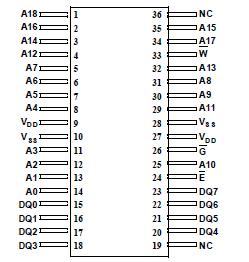UT7Q512: Features: · 100ns (5 volt supply) maximum address access time· Asynchronous operation for compatibility with industrystandard 512K x 8 SRAMs· TTL compatible inputs and output levels, three-state bid...
floor Price/Ceiling Price
- Part Number:
- UT7Q512
- Supply Ability:
- 5000
Price Break
- Qty
- 1~5000
- Unit Price
- Negotiable
- Processing time
- 15 Days
SeekIC Buyer Protection PLUS - newly updated for 2013!
- Escrow Protection.
- Guaranteed refunds.
- Secure payments.
- Learn more >>
Month Sales
268 Transactions
Payment Methods
All payment methods are secure and covered by SeekIC Buyer Protection PLUS.

 UT7Q512 Data Sheet
UT7Q512 Data Sheet






